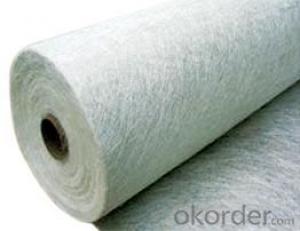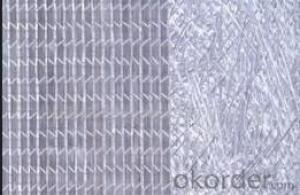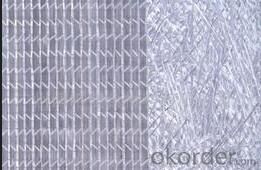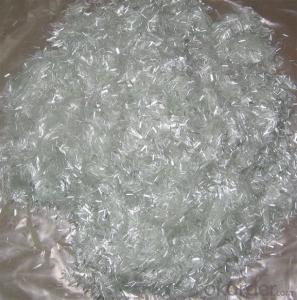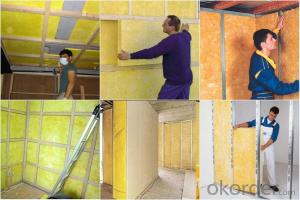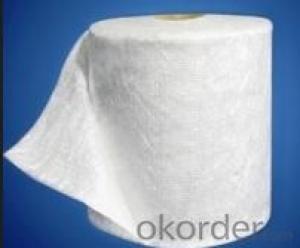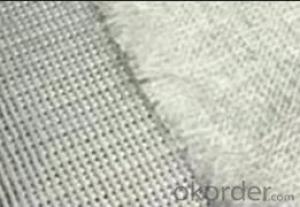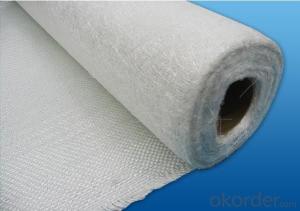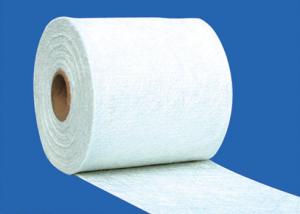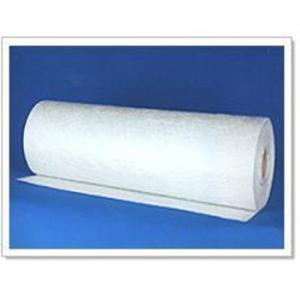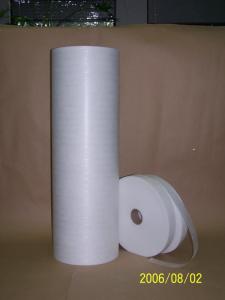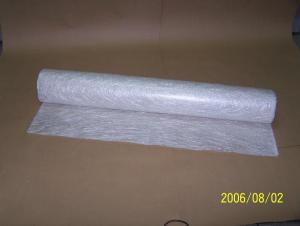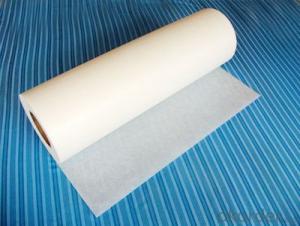Fiberglass Mat Tissue Woven Roving Combo Mat 980gsm, 1600mm
- Loading Port:
- Shanghai
- Payment Terms:
- TT OR LC
- Min Order Qty:
- 2000 m²
- Supply Capability:
- 30000 m²/month
OKorder Service Pledge
OKorder Financial Service
You Might Also Like
Process
Fiberglass stitch combo mat is the mat combining the woven roving and a even layer of chopped strand mat with polyester yarn.
Properties
• Fiber level unfolded without cross, high density, high utilizing rate.
• Multi-layer finished one time, decrease layer and enhance efficiency.
• Providing the product with multi-directional mechanical strength.
Applications
Mainly be used as reinforced materials in the composite material industry.
• Matrix: unsaturated polyester resin, vinyl ester resin, epoxy resin and phenolic resin etc.
• Craft: pultrusion, RTM, hand lay up, etc.
• Ultimate products: pultruded profiles, FRP body of boat, insulation board, automobile body.
Specifications
specifications | Fibre type | Wover roving | Chopped strand | Overall weight | Width |
(g/㎡) | (g/㎡) | (g/㎡) | (mm) | ||
EMK 600/300 | E-Glass | 600 | 300 | 900 | 1600/2400 |
EMK 600/380 | E-Glass | 600 | 380 | 980 | 1600/2400 |
EMK 600/450 | E-Glass | 600 | 450 | 1050 | 1600/2400 |
EMK 800/300 | E-Glass | 800 | 300 | 1100 | 1600/2400 |
EMK 800/380 | E-Glass | 800 | 380 | 1180 | 1600/2400 |
EMK 800/450 | E-Glass | 800 | 450 | 1250 | 1600/2400 |
Packaging: Wrapped in PVC and placed within a cardboard carton. | |||||
- Q: What is the impact resistance of fiberglass mat tissue at high temperatures?
- The impact resistance of fiberglass mat tissue at high temperatures can vary depending on several factors such as the specific composition of the tissue, the manufacturing process, and the conditions under which it is tested. Generally, fiberglass mat tissue exhibits good impact resistance at high temperatures due to the inherent strength and durability of fiberglass materials. Fiberglass is known for its excellent mechanical properties, including high tensile strength and stiffness, which contribute to its overall impact resistance. At high temperatures, fiberglass mat tissue is typically able to maintain its structural integrity and resist cracking or breaking under impact. This is because the fiberglass fibers are designed to withstand high temperatures and do not soften or deform easily. However, it is important to note that the impact resistance of fiberglass mat tissue can be influenced by other factors such as the presence of any additives or binders used in the manufacturing process. Some additives or binders may reduce the impact resistance or make the tissue more susceptible to damage at high temperatures. To determine the specific impact resistance of a particular fiberglass mat tissue at high temperatures, it is important to consult the manufacturer's specifications or conduct specific tests under controlled conditions. These tests can provide more accurate information on how the material will perform under impact at elevated temperatures.
- Q: Is fiberglass mat tissue suitable for railway infrastructure?
- Yes, fiberglass mat tissue is suitable for railway infrastructure. It is a versatile material that offers excellent mechanical strength, durability, and corrosion resistance. It can be used for various applications in railway infrastructure, including reinforcement of concrete structures, insulation, and protection against fire hazards. Additionally, fiberglass mat tissue is lightweight and easy to install, making it a cost-effective choice for railway projects.
- Q: Is fiberglass mat tissue compatible with different resin systems?
- Fiberglass mat tissue is indeed compatible with different resin systems. This versatile material can be utilized with a variety of resin systems, such as polyester, epoxy, and vinyl ester resins. Its exceptional wet-out properties enable the resin to be absorbed and distributed evenly throughout the mat. Consequently, this compatibility facilitates the fabrication of robust and long-lasting composite structures for numerous industries, including automotive, marine, construction, and aerospace. Nevertheless, it is crucial to carefully assess the unique properties and characteristics of the resin system employed to guarantee optimal performance and compatibility with the fiberglass mat tissue.
- Q: Is fiberglass mat tissue resistant to termites and insects?
- No, fiberglass mat tissue is not resistant to termites and insects.
- Q: What is the flexibility of fiberglass mat tissue?
- The flexibility of fiberglass mat tissue is high, as it can easily bend and conform to different shapes and surfaces without breaking or losing its structural integrity.
- Q: How does fiberglass mat tissue compare to mineral wool insulation?
- Fiberglass mat tissue and mineral wool insulation have different properties and applications. Fiberglass mat tissue is typically used as a reinforcement material for composites or as a facing material for insulation products. It provides good strength, flexibility, and resistance to moisture. On the other hand, mineral wool insulation is primarily used for thermal and acoustic insulation in buildings. It offers excellent fire resistance, sound absorption, and thermal performance. While both materials have their own advantages, the choice between them depends on the specific requirements of the project.
- Q: How does fiberglass mat tissue compare to fiberglass insulation batts?
- Fiberglass mat tissue and fiberglass insulation batts differ in their composition, purpose, and usage. Fiberglass mat tissue, also known as fiberglass veil or fiberglass veil mat, is a thin, non-woven fabric made from fine glass fibers. It is primarily used as a reinforcement material in composites, such as roofing materials, laminates, and automotive parts. The main purpose of fiberglass mat tissue is to add strength, durability, and resistance to cracking or tearing to the final product. It is commonly used in applications where high tensile strength and dimensional stability are required. On the other hand, fiberglass insulation batts are thick, flexible panels made from compressed fiberglass fibers. They are designed specifically for thermal insulation purposes, typically used in residential and commercial buildings. The primary function of fiberglass insulation batts is to create a thermal barrier, reducing heat transfer and improving energy efficiency. They are commonly installed in walls, attics, or crawl spaces to minimize heat loss or gain, providing better temperature control and reducing energy costs. When comparing fiberglass mat tissue to fiberglass insulation batts, it is important to note their distinct purposes and applications. Fiberglass mat tissue is not designed for thermal insulation and should not be used as a substitute for insulation batts. Conversely, fiberglass insulation batts are not suitable as a reinforcement material in composites. In terms of construction and installation, fiberglass mat tissue is typically used in conjunction with other materials, such as resins or adhesives, to form a composite structure. It can be easily cut, shaped, and molded to fit various shapes and sizes. On the other hand, fiberglass insulation batts are available in pre-cut sizes and are relatively easy to install by fitting them between framing studs or joists. Both fiberglass mat tissue and fiberglass insulation batts have their respective advantages and disadvantages, depending on the specific requirements of the project. While fiberglass mat tissue offers superior strength and dimensional stability for composites, fiberglass insulation batts excel in providing thermal insulation for buildings. Ultimately, the choice between the two will depend on the intended application and desired outcome.
- Q: Can fiberglass mat tissue be used for decorative applications?
- Fiberglass mat tissue is not only limited to its applications in the construction industry, as it can also be utilized for decorative purposes. With its thin and lightweight composition, it serves as an ideal material for reinforcing composites, plastics, and resins. However, its smooth and glossy surface makes it perfect for adding a decorative finish to surfaces. By using fiberglass mat tissue, one can create distinctive textures, patterns, or designs on walls, ceilings, furniture, and even art installations. Its versatility allows for easy shaping, molding, or forming into different shapes, making it suitable for various creative applications. Furthermore, fiberglass mat tissue comes in a variety of colors, allowing for further customization and enhancing its decorative potential. It can be painted or coated with different finishes to achieve the desired aesthetic effect. Additionally, its durability and resistance to moisture, chemicals, and UV radiation make it suitable for both indoor and outdoor decorative applications. To summarize, fiberglass mat tissue offers a smooth surface, versatility, and durability, making it an excellent choice for adding a decorative touch to surfaces. Whether it is used for architectural design, interior decoration, or artistic installations, it provides endless possibilities for creating visually appealing and unique decorative applications.
- Q: How is fiberglass mat tissue bonded to surfaces?
- Fiberglass mat tissue is typically bonded to surfaces using a combination of adhesive and pressure. The adhesive, commonly a resin or epoxy, is applied to the surface and then the fiberglass mat tissue is pressed onto it. This ensures proper adhesion and allows the mat tissue to conform to the surface contours. Once bonded, the adhesive is cured to permanently bond the fiberglass mat tissue to the surface.
- Q: What are the potential health and safety concerns associated with working with fiberglass mat tissue?
- Working with fiberglass mat tissue can pose potential health and safety concerns. The fine fiberglass particles present in the air during handling and cutting can be inhaled, leading to respiratory issues such as irritation, coughing, and difficulty breathing. Prolonged exposure to these particles may also result in long-term lung damage. Additionally, direct skin contact with the fiberglass can cause skin irritation and allergic reactions. Hence, it is important to use appropriate personal protective equipment, such as gloves, masks, and goggles, to minimize these risks and ensure a safe working environment.
Send your message to us
Fiberglass Mat Tissue Woven Roving Combo Mat 980gsm, 1600mm
- Loading Port:
- Shanghai
- Payment Terms:
- TT OR LC
- Min Order Qty:
- 2000 m²
- Supply Capability:
- 30000 m²/month
OKorder Service Pledge
OKorder Financial Service
Similar products
Hot products
Hot Searches
Related keywords
